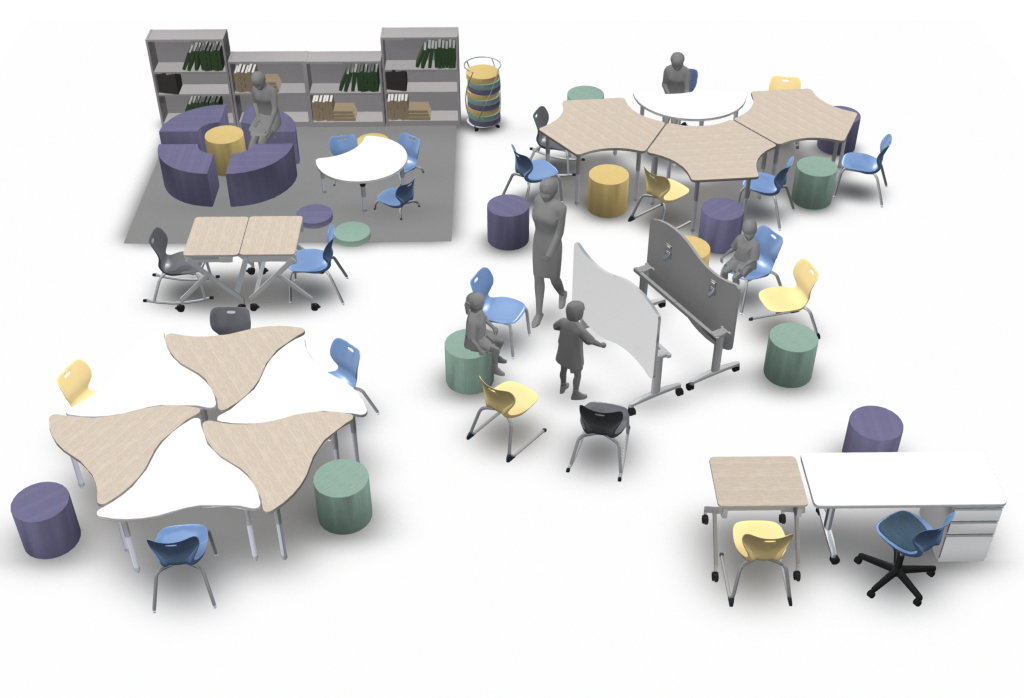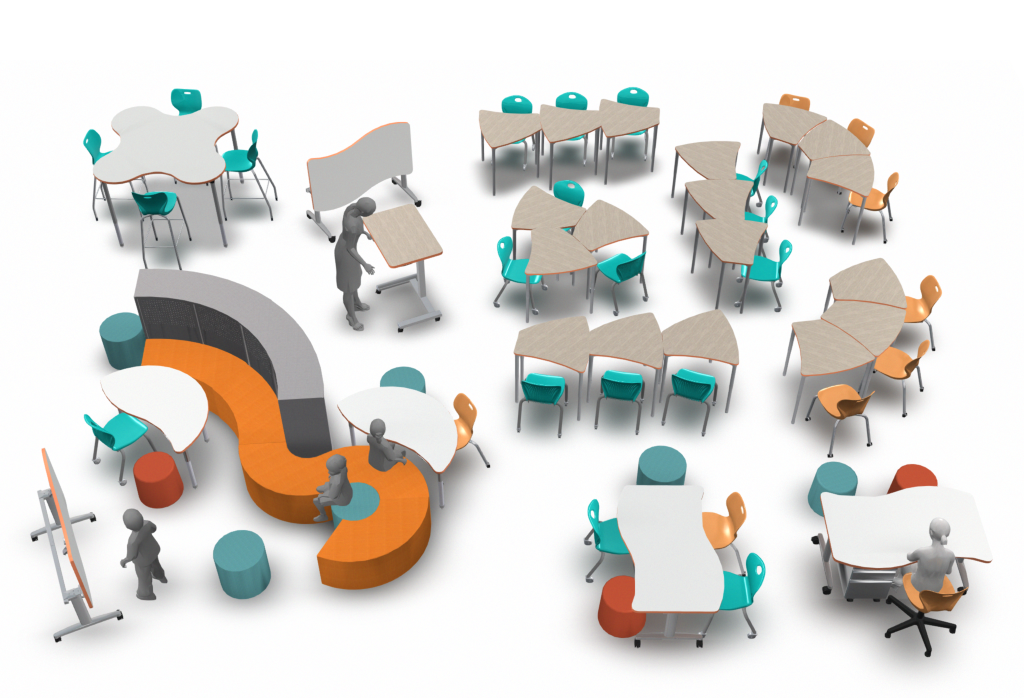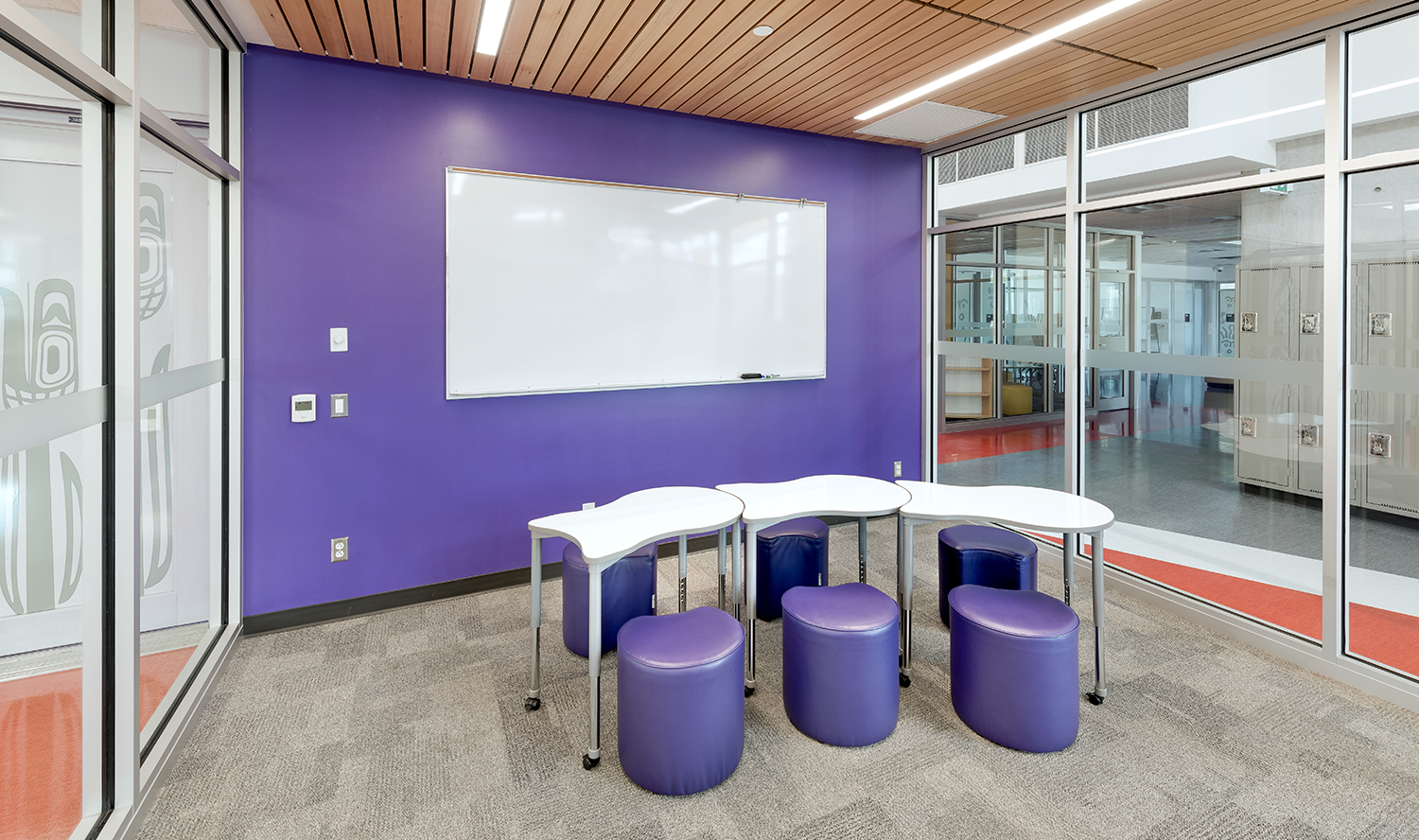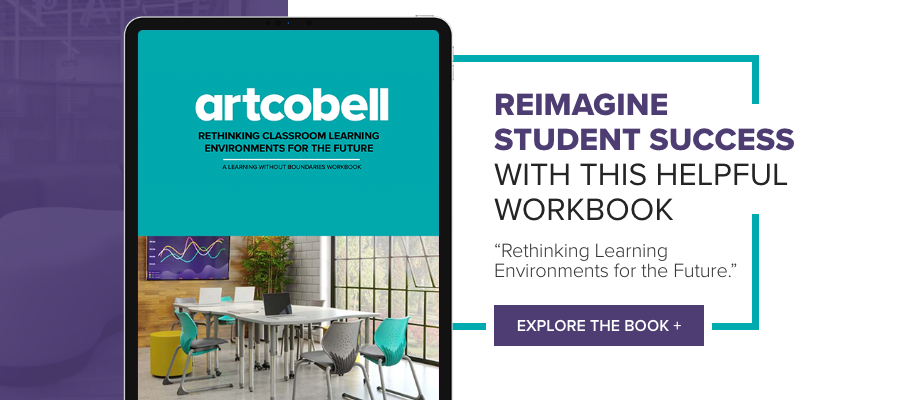How a Collaborative Classroom Enables Deeper Learning
One of the most compelling arguments for collaborative learning is that it actively engages students in the learning process. Small group activities are not new to the classroom. Traditionally, students have gathered to study, practice, and present but there is a growing acknowledgment that combined with whole group instruction and individual work, collaborative classroom learning is a powerful teaching strategy.
To accomplish the goal, students need to be taught how to communicate, exchange ideas, and suggest solutions. These group activities promote social emotional and intellectual growth preparing our youth for their next chapter.
Transitioning Into the Collaborative Classroom Approach
In collaborative classrooms, individualized learning skills like lecturing, listening, note-taking, and assessment may not disappear entirely, but live alongside other processes that are based in students’ discussion and active work with the course material. Regardless of the specific approach or how much of the lecture-based course is replaced, the goal is the same: to shift learning from a teacher-centered to a student-centered model. So, what does a collaborative classroom look like? Teams of 2, 3, 4, 5, 6, and 8 can function effectively as long as students have the ability to interact face-to-face with minimal distractions.

The Case for a Collaborative Learning Classroom
Collaborative learning is an educational approach to teaching and learning that involves groups of students working together to solve a problem, complete a task, or create a product. Students with different levels of ability use a variety of learning activities to improve their understanding of a subject. Each member is not only responsible for learning what is taught but also for helping their peers learn.
Benefits of Collaborative Learning:
- Builds interpersonal skills
- Increases higher-level thinking as students learn from each other
- Builds self-esteem because each person is essential to the group’s success
- Promotes a positive attitude towards the subject matter
- Increases student retention
Students and teachers alike need to know how to collaborate effectively by taking ownership of their parts. This strategy builds an active learning community that supports, uplifts, and empowers each other. Teachers can be expected to introduce interpersonal skills such as making eye contact and using inside voices. During collaborative work, teachers can be found facilitating healthy debates and cheering students on. Encouragement is vital when it comes to promoting behaviors that encourage equal exchange among teammates.
Related Article: How Flexible Classroom Furniture Re-Invents Learning
Collaborative Learning Strategies that Promote Student Achievement
Here are some collaborative learning strategies and how teachers can incorporate them into their curriculum to foster student success:
- Think-Pair-Share: a strategy where students think individually about a question, pair up with a classmate to discuss, and then present their responses with another pair or the whole class
- Jigsaw: a comprehension strategy. See it in action here!
- Student-led teaching: where the students become the teacher. This exercise allows the student to research, master, and present the material all while working on their public speaking skills.
Re-Thinking Classroom Layouts by Creating a Collaborative Classroom
Group work takes commitment and can be a difficult transition if students and teachers are accustomed to a traditional classroom. Giving control to the students allows them the ability to own their education.
With the collaborative learning approach, students have the opportunity to try new ideas, gain confidence amongst their peers, and listen to one another. While group work isn’t for everyone, it’s a necessary skill needed for our youngsters to succeed in the real world. Below are a few learning components to help your class excel.
Flexible Classroom Furniture to Promote Collaborative Learning
Collaborative learning furniture could include tables and desks with markerboard surfaces where students and teachers can easily share and work out problems.

The ARISE Workstation allows the teacher to navigate throughout the room with ease. This configuration gives the teacher or student the opportunity to present to a large group of students in a friendly setting. This would be an excellent setup for debates, round table discussions, or presentations.
Shape tables can easily be reconfigured to accommodate a collaborative learning environment. Combine Gravity, Expanse, Nebula, and Nova Shape Tables to create a flexible learning environment that can accommodate multiple students plus the teacher. When you need a learning space for individual or small group work, break them apart and move furniture pieces accordingly. When you need a learning space for individual or small group work, break furniture pieces apart and move accordingly.

Collaborate in comfort! Learning does not always take place in the classroom. You can learn anywhere! Create fun and collaborative learning spaces by combining Beta Shape Desks and Crescent Soft Seating. 
Today’s classrooms are smarter, more connected, and adaptive to a range of learning styles. This shift requires classroom furnishings that support active learning and provide educators vital options to help them create a collaborative classroom for their students. To learn more about how schools are approaching classroom conversions or to map out the plan for your own classroom, download our Collaborative Conversion brochure or visit with one of our local partners.
Recent Posts
In part one of our series on thoughtful classroom design, we heard an educator’s perspective on...
In part one of our series on thoughtful classroom design, we heard an educator’s perspective on...
